It's taken a little while to finalise this thing, but I can now present part two of my horror-themed blog for October. These sixteen games are mostly taken from the last decade of gaming, which just goes to show how popular horror games remain. Guess we just love to be scared. Read on, if you dare...
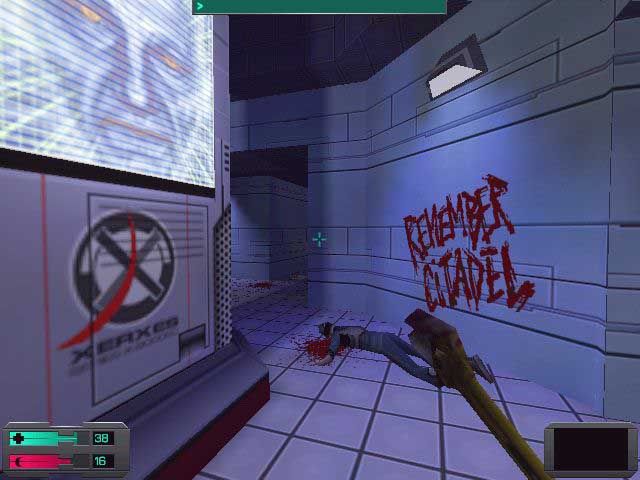 System Shock 2 (PC) (1999)
System Shock 2 (PC) (1999)
Space horror is one of my favourite subgenres of science fiction, however like many cyberpunk stories, the threat in System Shock 2 comes not from vicious aliens, but from our own technology. The idea of a computer going rogue, a malevolent AI twisted by its own intelligence into massacring its creators, is actually one of the more terrifying concepts in predictive science fiction. System Shock 2 leaves the player stranded in one of the most atmospheric environments ever conceived in a game. Alone, trapped on a damaged spacecraft with nothing but a few ghosts that don't know they're dead and twisted mutants begging you to kill them even as they try to rip your head off. The disembodied voices of the crew communicate from beyond the grave via audio logs and here and there are last-gasp messages scrawled in blood. Finally, main villain SHODAN plays her part masterfully with cold, logical perfection.
Martian Gothic: Unification (PlayStation) (2001)
Another science fiction adventure, this time set on the original source of interplanetary evil: Mars. Like Doom and others, Martian Gothic revolves around an archaeological excavation on the Red Planet, a discovery that has somehow resulted in the entire research team suffering an untimely demise. Sent to the Mars base to figure it all out, it's up to your three-man team to solve the mystery before you get eaten by the reanimated corpses of the base personnel. Even in space, there are zombies. Martian Gothic is an overlooked gem of the genre, with a great setting, tense atmosphere and a lingering sense of wrongness and dread from the very start as the (slightly mad) base computer predicts that although three have entered the base, only two will leave alive.
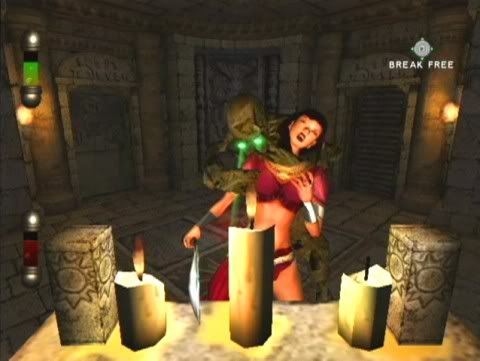 Eternal Darkness: Sanity's Requiem (Gamecube) (2002)
Eternal Darkness: Sanity's Requiem (Gamecube) (2002)
A great horror adventure whichever way you look at it, the spookiest part of Eternal Darkness is actually a relatively minor gameplay feature: the sanity meter present throughout the game. Affected by your actions in the game, if your character's sanity drops low enough the game will respond by utilising some of the creepiest visual and audio effects ever used to convey fear in a game. Camera angles become skewed and you are subjected to various auditory hallucinations: whispers, screams, chains rattling, blades being sharpened. Walls bleed and grotesque visions appear. At times, you'll even question your real-life sanity as the game simulates errors with your TV or console; certainly breaking the fourth wall... but then the best interactive storytelling often does.
The Thing (PlayStation 2) (2002)
With its stunning, gore-drenched practical effects and claustrophobic terror, The Thing is one of the greatest horror films ever made. Unusually for a movie license, it makes a pretty good horror game too. It's a sequel to the film, but the story alone isn't what makes The Thing so great. The game uses a fantastic trust-based squad system – your teammates can be infected and it's up to you to kill them off before it's too late. Get it right and your squad is safe, get it wrong and your squad will lose trust in you and might even try to kill you off. It's a nice nod to the paranoia of the original film as you can never be too sure who you can trust, with surprise attacks possible from within as well as outside the group. Your squad will also react to the environment – walking into a blood-stained area will likely cause your team to panic, flee or even kill themselves out of despair!
Project Zero II: Crimson Butterfly (PlayStation 2) (2003)
The Project Zero games definitely feature one of the more unique gameplay aspects I've come across. Destroying malicious ghosts by taking their picture: you can't deny that's a great idea. Intriguing features aside, Project Zero II is a great little ghost story that appealed to me from the first time I loaded the game. With suitable J-horror flair for dramatic 'creep-out' moments, the game alternates between big shocks and more intense, slow-burning frights and seems to delight in making you jump straight out of your seat or cower in the corner as appropriate. Play this one with the lights on. In case you were wondering, some of you might know this game better as Fatal Frame 2 (the North American title).
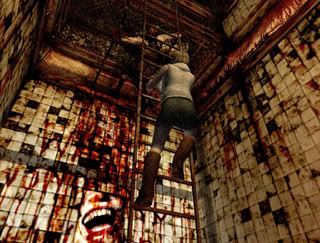 Silent Hill 3 (PlayStation 2) (2003)
Silent Hill 3 (PlayStation 2) (2003)
Silent Hill has always been one of the best survival horror series out there, with its twisted and terrifying otherworld. An alternate realm emphasising the darkest aspects of our world, a freakish parallel universe underlying our own, comprising the same familiar outlines but shaded in the most fantastical and perverted colours imaginable. It's looking into a mirror which shows nothing but blood, death and misery. For me Silent Hill 3 is the strangest and scariest of the bunch thanks to its outstanding design work, grotesque monsters and excellent plot... but I heartily recommend the whole series.
Vampire: The Masquerade – Bloodlines (PC) (2004)
White Wolf's World of Darkness role-playing setting did urban fantasy and modern vampire culture to perfection, years before Twilight and its ilk diluted the genre into parody. An RPG shoe-horned into the body of an third-person actioner, Bloodlines is a flawed game that no amount of fan-patching can completely fix, but the picture it paints is spot-on. It is simply overflowing with character; set in a world that is dark, violent, bloody and with nary a sparkle in sight. Bloodlines is the only game to do this sort of setting right, and while the majority of the game isn't really scary, it does feature one of the best single horror-themed levels I've ever played: a haunted hotel done to a turn, Shining styIe.
The Suffering (PlayStation 2) (2004)
The Suffering doesn't get mentioned much in lists like this, which is a shame. The game is set in a prison overrun by Stan Winston's monster menagerie of creepy, twisted creatures, clever personifications of different methods of execution. Visions plague the protagonist throughout, while the seductive voices of demons attempt to coerce the player to the dark side. Which brings me neatly to the scariest part of The Suffering: morality and the in-game choices it provides. How quickly we can forget about being the good guy. When faced with a choice how often will we – removed from the game world as we are – perform evil actions for kicks or out of sheer curiosity? It's not real, but the darkness and desire is there regardless.
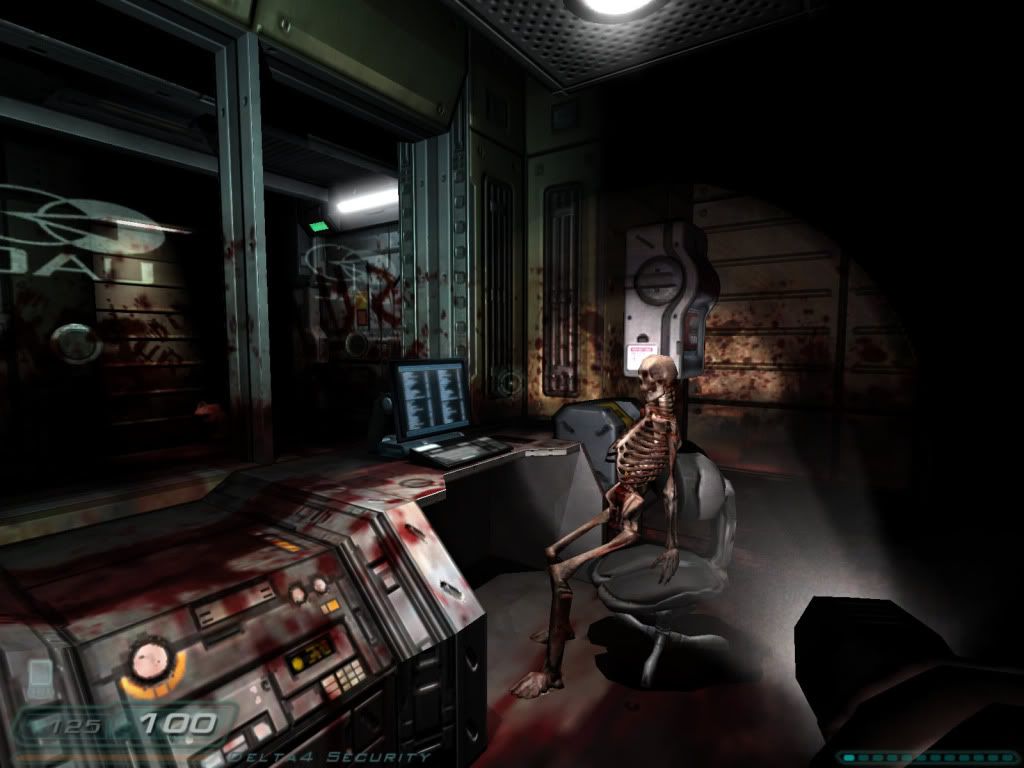 Doom 3 (PC) (2004)
Doom 3 (PC) (2004)
The original Doom kicked first-person combat into the mainstream with all the subtlety of a neon freight train on its way to mardi gras, but ten years of gaming evolution separate Doom 3 from its forebears. That's ten years of graphics card upgrades, physics-based game engines and artificial intelligence routines. The invention of realistic environmental lighting in a game engine, to set a scene through delicately textured shadow, enables Doom 3 to turn a fragfest into a frightfest. You know it's coming, yet you can't help but jump a foot into the air when a demon leaps from the inky blackness to claw your face off.
Condemned (Xbox 360) (2005)
Condemned is a game that is – to begin with – grounded more in reality than many of the supernatural or science fiction-based games on this list. We've seen the premise before: framed for murder, you must work your way through a hostile and uncooperative city, investigating crime scenes and fighting off attackers in order to uncover the real killers. Trouble is, a mysterious phenomenon has resulted in insanity spreading like a plague. Violent psychotics attack without mercy, and these are no deliberate undead or predictable monsters. These foes are smart, and tackling one or more in melee combat requires concentration as they attack and feint, flee and hide to the point where you are often left looking about wildly, pulse pounding as you try to anticipate the next attack. Brutal stuff.
Dead Rising (Xbox 360) (2006)
Dead Rising is a game tailor made for fans of George A. Romero's seminal zombie-flick, Dawn of the Dead, so much so that a lawsuit was even pushed under Capcom's door. Like the film, the game is set in a shopping mall during a zombie apocalypse, with endless swarms of the walking dead doing their best to eat your brains. Both movie and game feature traditional undead horror tempered with humour, however Dead Rising does away with the black satire and social commentary of the film, instead injecting into its core a crazy whack-a-zombie sense of fun that rewards inventiveness with your kills.
Penumbra: Black Plague (PC) (2008 )
The second Penumbra game is a rarity in that it features almost no combat whatsoever. Don't take this to mean there aren't any enemies though, as the foes in Black Plague are plentiful and vicious. It's just that you cannot acquire any real weapons to defeat them. The emphasis here is strongly on stealth: avoiding your enemies and, if necessary, running away. Nothing is scarier in real life than being helpless, and the same holds true in video games. Not being able to pull a trigger or wave a knife around is startling, to say the least. Careful exploration, creeping down corridors and peeking round corners interspaced with panicky encounters will dominate your time with Black Plague. I haven't completed this one yet... I'm a little worried I might have a heart attack first.
Cryostasis (PC) (2008 )
An ice-locked Russian ship, frozen and deserted for twenty years: a perfect environment for a horror game. The tight, enclosed confines of the ship create a claustrophobic environment in which to stage a weird mystery, posing lots of questions and providing few answers. There's a pinch of the supernatural about the game; the protagonist's ability to enter the minds of long-dead crewmen and change the past adds a fantastical touch, while strangely altered crewmen do their damnedest to rip your heart out. Slow movement and inefficient weapons might be sources of frustration in other games, but here they help to enhance the mood and heighten tension to a fever pitch. Everything about Cryostasis just a little different to nearly every other video game I've played and it works very well as an interesting horror adventure.
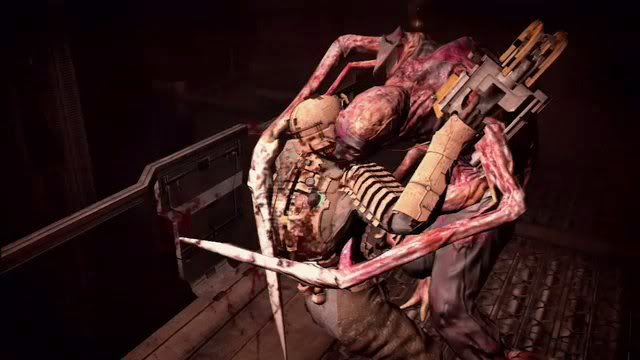 Dead Space (Xbox 360) (2008 )
Dead Space (Xbox 360) (2008 )
The scariest game this generation? Possibly. Dead Space takes influence from earlier outings within the space horror genre: isolation on a derelict spaceship, one survivor caught in the midst of scientific experimentation gone awry, jumping at shadows and all manner of deadly creatures. Intense feelings of isolation and dread permeate play, greatly helped by the immersive, HUD-less interface and creepy atmosphere. From the beginning your weapons – often engineering tools volunteered for decapitation detail – are not terribly effective, and many of the games foes can only be put down for good via some precision cutting. Strategic dismemberment is the order of the day and it's a nice touch, adding a strategic element and a kind of panicky perfection to combat. There's plenty of gore to go around as well.
Left 4 Dead 2 (PC) (2009)
I don't know about you, but if the zombie apocalypse actually occurred I'd want to be with a couple of my buddies. The Left 4 Dead games are built with co-op in mind, which actually takes some of the scare-factor away: you're often far too busy trying to out-do your friends than to really grasp the horror of the situation. But the game has a trick to sober you instantly: upon hearing that small refrain that signals the incoming hordes, it's not often that despair doesn't set in. Endless swarms of infected threaten you at every turn – not the slow, shambling zombies of Romero's legacy, but brutally effective creatures more reminiscent of 28 Days Later. Left 4 Dead 2 improves on the first game with more intense, frantic situations and even more overwhelming odds. Just don't run out of bullets.
Alan Wake (Xbox 360) (2010)
Released a mere five months ago, Alan Wake is the most recent release on this list and as such, perhaps its full impact has not yet been realised. Alan Wake is a slow-burning horror game with few spectacular set-pieces to gape at, instead placing you into one long drawn-out nightmare. Terror and dread are the very nature of the game. What is darkness? A mere absence of light, or something much more sinister? In Alan Wake you are assaulted by darkness itself, forming enemies made of nothingness and environments so sinister you'll end up jumping at every flicker of movement. This is what a modern horror game should be.
So there you have it. When I started this blog, I thought it would be difficult to unearth thirty-one distinct or unique horror video games without resorting to listing either multiple franchise iterations or sub-par games. As it turns out, after going through my games lists and casting my mind back over all games I've played over the years I ended up with too many frightfully good horror games! In the end I had to make some difficult cuts and try to create a list of high-quality games that was as varied as possible. Those that sadly didn't make the list include Project Firestart, Alien 3, Clock Tower, The Dark Eye, Blood, House of the Dead III, Forbidden Siren, F.E.A.R. and erm, I MAED A GAM3 W1TH Z0MBIES 1N IT!!!1